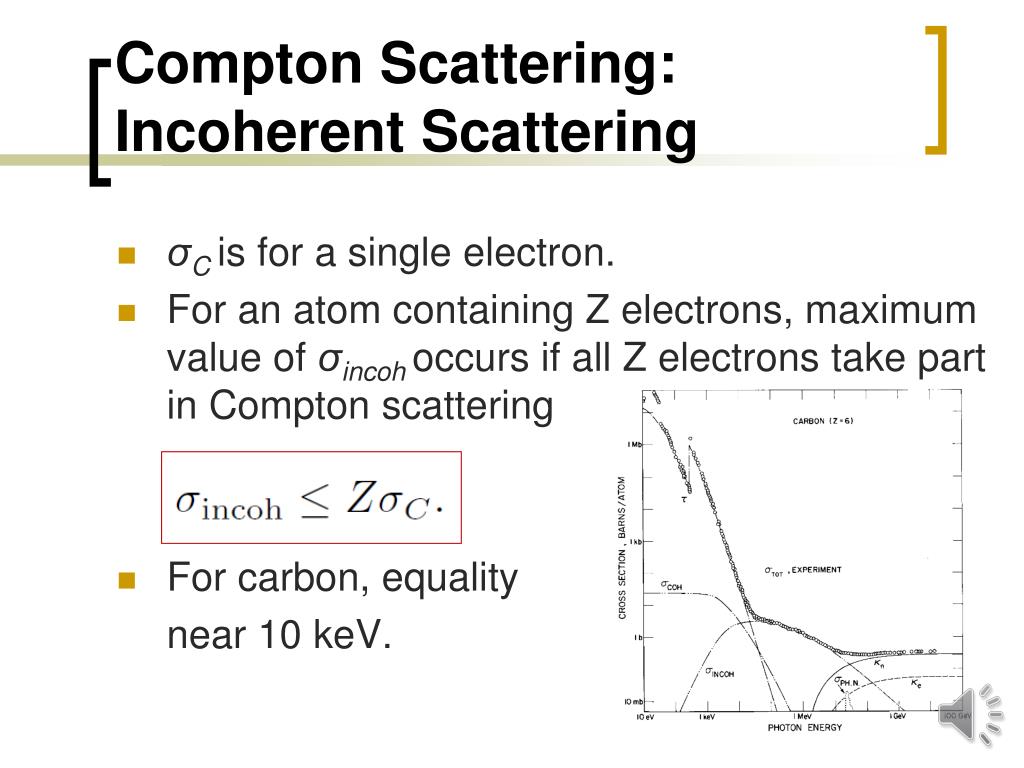
Compton earned the Nobel Prize in Physics in 1927 for this new understanding about the particle-nature of photons. H.Compton in 1923 at Washington University in St. The Compton scattering was observed by A. The energy transferred to the recoil electron can vary from zero to a large fraction of the incident gamma ray energy, because all angles of scattering are possible. The photon transfers a portion of its energy to the recoil electron. This deflection results in a decrease in energy (decrease in photon’s frequency) of the photon and is called the Compton effect. In Compton scattering, the incident gamma ray photon is deflected through an angle Θ with respect to its original direction. This deflection results in a decrease in energy (decrease in photon’s frequency) of the photon and is called the Compton effect.Ĭompton scattering is the inelastic or nonclassical scattering of a photon (which may be an X-ray or gamma ray photon) by a charged particle, usually an electron. Now we also explain that the photon horizontally strike on electron but after collision there are two components possible in photon and electron momentum i.Definition of Compton Scattering In Compton scattering, the incident gamma-ray photon is deflected through an angle Θ with respect to its original direction. Photon momentum + Electron momentum (Before collision) = Photon momentum + Electron momentum (After collision)

Photon Energy + Electron energy (Before collision) = Photon Energy + Electron energy (After collision)


Suppose that a photon having E=h v energy collide with an electron after collision photon scattered with an angle Theta and electron displaced at certain position and made an angle fi this angle is known as recoil angle and displaced electron is known as recoil electron. 28.9999999999998 29 Electron Compton Wavelength- Compton Shift (Calculation completed in 00.004. After collision some of the energy and momentum is transferred to the electron which produce modified and unmodified radiation. The photon having unchanged frequency is known as unmodified radiation and one having changed wavelength is known as modified radiation.Ĭonvincing evidence that light is made up of particles (photons), and that photons have momentum, can be seen when a photon with energy collides with a stationary electron. one having lower wavelength (greater frequency) due to inelastic collision and other having unchanged wavelength (unchanged frequency). According to Compton – “When a high-energy photon colliding (scattered) with loosely bound electrons then there are two components present after scattering i.e. Compton in 1927 (for which he received a 1927 Nobel Prize). From: Encyclopedia of Physical Science and Technology (Third Edition), 2003.
Compton effect recoil angle of electron free#
The Compton Effect was first demonstrated by A.H. Bremsstrahlung (or braking radiation) is the radiation given off by free electrons that are deflected (i.e., accelerated) in the electric fields of charged particles and the nuclei of atoms.


 0 kommentar(er)
0 kommentar(er)
